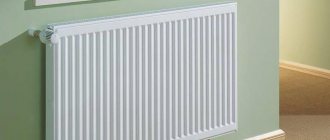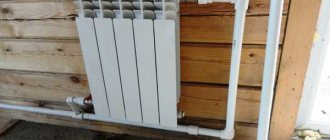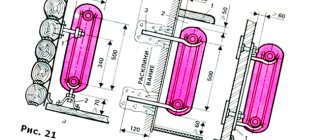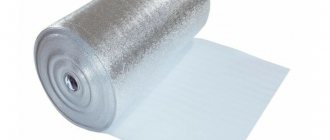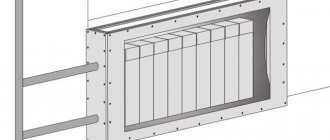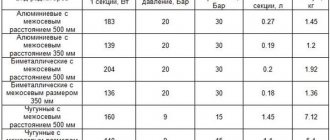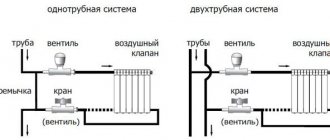Characteristic
Brackets for heating radiators are fastening elements of any design, shape, and size , made of steel, cast iron or other metals or alloys.
Products are divided into:
- hanging fasteners designed to secure the radiator to the wall;
- floor stands.
There are both adjustable and non-adjustable holders of both varieties.
Important! The key to proper installation of any heating battery is the selection of fasteners that match the characteristics of the model being installed. It is optimal to use those that come with the radiator.
Results
Brackets for radiators are of different types and types: for wall and floor installation. The standard ones that come with the kit are reliable, but they are more difficult to work with. Planks and devices for quick installation save time, but cost a lot.
The heating appliance market is striking in its diversity. But the familiar cast iron radiators are still popular due to their many advantages. They are durable, corrosion resistant, easy to use and very durable. But even the most reliable device may one day require replacement. You can solve the question of how to hang a heating radiator on brackets yourself. The main thing is to have experience, the necessary materials and take into account some installation nuances.
Modern cast iron radiators are an example of style
Wall mount
The wall-mounted method of mounting batteries is the most common when installing heating systems. The selection of fasteners is carried out taking into account the weight of the battery and the material from which it is made.
Fasteners for cast iron batteries
These clamps are distinguished by their massiveness and increased strength. As a rule, in price lists they are marked “reinforced”.
Photo 1. Brackets for cast iron heating radiators. The products are highly durable.
For wall mounting of cast iron radiators, the following types of fasteners are used:
- Non-adjustable cast iron fasteners.
- Adjustable, made of steel. They allow you to change the distance between the wall and the radiator, which makes it possible to make adjustments in height and horizontally.
- Pin holders made of steel.
- Holders on the bar. This is a steel strip with two hooks for attaching the upper and lower battery collectors, which is attached vertically to the wall.
Attention! When installing cast iron radiators, it is important not only to select suitable fasteners, but also to take into account the wall material. For brick and concrete, as a rule, standard hanging brackets are sufficient. For plasterboard or wooden walls, reinforced floor fasteners are used that can take the main load.
For aluminum and bimetallic radiators
Unlike cast iron analogues, fasteners are lighter and less massive.
are used for wall mounting :
- Corner fasteners made of steel. Depending on the mass of the radiator, conventional or reinforced models are used. They have two recesses that allow it to be fixed to both the lower and upper manifold.
- Steel pin holders. They are divided into molded and round models.
- Universal wall fasteners with polymer coating. The brackets themselves are made of steel, and the polymer pad serves to prevent the battery from moving due to thermal expansion.
Types, design and application of fasteners
Wall mounting
Here, manufacturers do not spoil us with variety: wall mounting brackets come in only two varieties.
- Angular (plate, cantilever). Behind these names lies only an L- or T-shaped steel plate with holes for screws. After marking the attachment points, the bracket is attached to the wall using a standard mount or (which is much more reasonable) anchor bolts; the heating device is hung by the collector on a plate with a recess perpendicular to the wall.
The product is suitable for lightweight aluminum batteries.
- Pin brackets are a curved rod with a pipe thread that is screwed into a plastic dowel. The dowel, in turn, is driven into a hole pre-drilled in the wall. This type of fastening is noticeably more reliable than the previous one and is designed for greater load.
This type of fastener has a greater load-bearing capacity.
Please note: it is better to hang massive cast iron heating devices on pin brackets.
crazy hands
If for some reason you do not have the opportunity to purchase a mounting kit for wall mounting of a radiator, the situation can be saved by ordinary smooth fittings with a diameter of 10 - 12 millimeters.
- The radiator is placed on any supports (bars, bricks, etc.) in the working position.
- Mounting points are marked on the wall. Their total number is selected at the rate of one per three sections of the heating device; In this case, both the upper and lower collectors need fastening.
- The wall is drilled under reinforcement with a diameter 0.5 mm less than the own diameter of the rods.
- The reinforcement is cut into pieces of approximately 25 cm; on one side (hammered into the wall) the chamfer is removed.
- The rod sections are hammered into the wall, after which the heating device is hung on them.
- The edges of the rods are bent upward using any pipe as a lever and cut in place.
Floor mounting
Here are the most common types of floor brackets.
This floor mount for aluminum radiators is designed for fixed depth sections (100 millimeters). The heater is installed on a support with the lower manifold; the rear fins of the sections are fixed with a pair of screw clamps.
Bracket K 21.7.
Unlike the previous one, this product:
- It is adjustable in height, which allows you to install the heating device both at a minimum distance from the floor and with a gap below it.
- Universal: you can install an aluminum or bimetallic radiator of any size on it.
The retail price of the stand varies from 300 to 450 rubles.
Installing the heater on a rack is extremely simple:
- The upper holder is set at the desired height;
- The radiator is hung on it;
- The lower holder rises to the level of the lower manifold and is clamped with a screw.
Another device for fixing a heating device of fixed dimensions. In this case, it is designed for a center-to-center distance between collectors of 500 mm with a section depth of 100 mm. The absence of moving parts makes it reliable and cheap (retail cost is only 200 rubles).
Bracket K 11.33.
Here is an adjustable stand for panel radiators; The diagram makes it clear how to fix them with stops. The maximum mounting height is 640 millimeters (along the upper edge of the radiator); The retail price of the product is 350 rubles.
Bracket K 10.10.
Economy version of the mount for a panel steel radiator. There is no height adjustment; The simplest method of fastening the panel is used - standard eyes are put on the hooks of the racks. The cost predictably turns out to be very affordable: in batches of 100 pieces, K 10.10 can be purchased for 150 rubles.
Floor mounting method
It is used much less frequently compared to the mounted one.
Main reasons for choosing floor installation:
- Inconsistency of wall material with the required load. Relevant for aerated concrete and plasterboard walls.
- The need to strengthen the wall mounting. Used for heavy weight models, primarily cast iron.
- Cannot be placed on the wall due to lack of space.
- Lack of a suitable wall (a panoramic window is installed in the room).
- Design decision.
Among the main types of floor holders are:
- Adjustable fasteners. Some models are equipped with plastic covers.
- Non-adjustable holders. Some models are also equipped with plastic covers.
- Combined holders.
- Special holders with a width of 80 to 100 mm.
Photo 2. Brackets for floor installation of radiators. They are racks that are attached to the floor.
Floor-standing types are made of cast iron, steel or other alloys designed to support the weight of certain battery models.
Installation method
Selecting a position for the radiator
If we have chosen the installation method and purchased the appropriate brackets, then we should figure out how to mark the mounts for the radiators. The thing is that its efficiency, and therefore our comfort, depends on the position of the heating device. And heating costs.
Scheme of correct placement with minimal gaps
When choosing a location and marking for fasteners, follow these tips:
- We install the batteries at a distance from the entrance to the room, on the wall or under the roof.
- When installing in a window sill niche, make sure that the width of the radiator is about 75% of the width of the niche.
Advice! The same can be recommended when installing just under the windowsill.
- To ensure effective heat transfer, we mark the wall for mounting so that the radiator is located below 100 mm from the floor. It is also important to maintain a gap between the top edge of the battery and the window sill board, the optimal value of which is 70 - 150 mm.
- The distance from the wall ensures heat dissipation from the rear surface of the radiator. Its recommended size is from 25 to 60 mm.
Advice! If the radiator is located close to the wall and is completely covered by a window sill board, then holes need to be made in it to allow warm air to escape. Only then can we protect the glass from constant condensation during the cold season.
Wall mounting
After marking, you can begin installation work.
We will begin the description of this process with the wall installation algorithm:
- Using a punch, we make starting holes in the finishing and plaster layer using the applied markings . These holes are needed to ensure that the drill does not move during drilling.
Marking for wall brackets
- Using a hammer drill and a drill of the required diameter with pobedite surfacing, we begin to drill sockets for fasteners . The depth of the socket should be slightly greater than the length of the dowel used.
- We hammer plastic or metal anchors into the drilled and cleaned sockets.
- We screw fasteners for cast iron heating radiators into sleeves installed in the walls . We fix the plate brackets using locking screws, having previously aligned them vertically and horizontally.
Calculation of the required number of brackets
As a rule, independent calculation is not required, since this information is contained in the technical documentation for the radiator . There are also recommendations regarding the use of brackets of certain models.
Calculation for wall mounting:
- For cast iron batteries, where the number of sections is from 2 to 9, 3 pieces are required , two of which hold the battery on top, one on the bottom . If the number of sections is greater, brackets are added based on the average calculation: 1 fastener per 3 sections.
- For aluminum batteries with a number of sections from 2 to 12, 3 brackets are also required: on top and bottom - 2 and 1, respectively . Additional holders are added based on the average calculation: 1 fastener for 4-5 sections.
- For bimetallic radiators, the number of fasteners is similar to aluminum ones if there are fewer than ten sections. Additional holders are added at the rate of: 1 fastener for 4-5 sections.
The number of racks for installation on the floor is selected based on: 2 holders per battery with a number of sections up to 10 . For every 4 subsequent sections, 1 fastener is added.
Marking and installation
For placing radiators, areas located directly under the windows are considered optimal.
Mounting rules for all types of batteries
The installation rules for radiators of any design are non-specialized and the level of quality of performance of the main task of the device - heat transfer - depends on their compliance. As usual, pipes and heating devices for transporting coolant (warm water) are located along the walls of the premises. As for private houses, it is recommended to locate all heat sources near the entrance doors, window openings, and balconies.
It is considered the most effective to install heating radiators under window openings, since the heat flow from them blocks the penetration of cold air from the glazing.
In order to achieve high heat transfer from the radiator, it should be installed at a certain distance:
- From the floor about 100-150 mm;
- From the wall 40-50 mm;
- At least 90-120 mm to the window sill.
Further instructions for mounting radiators vary depending on them:
- Constructions;
- Massiveness;
- Dimensions (number of sections).
There are two types of fasteners:
- Wall;
- Floor.
Fastening cast iron radiators
The most massive of all heating devices, cast iron products require special attention when mounted on the wall. Based on this, the fastening elements for similar batteries must be very strong in order to hold the bulky structure for a long time.
Finished products according to the design are marked with the word “reinforced”, as they are made from thick-walled metal. They can be factory painted in most cases white. But if you want to buy colored heating devices, you can order radiators and fixtures painted in the same color scheme.
Note! When choosing a bracket for a cast iron radiator, pay attention to its length. It must correspond to the dimensions of the device, taking into account the recommended distance from the wall.
In addition to brackets for cast iron batteries, hooks are produced made from bent iron rods of enormous diameter with threads. Such fastenings are sold in a set with dowels for installation.
Installation of hooks is easy:
- Initially, the fastening points are marked according to the estimated quantity;
Attention! The maximum number of mounts for a radiator in 6-8 sections is three: two in the upper part and one supporting one at the bottom. When increasing the number of sections to ten, three fasteners will be useful at the top and two at the bottom. For each subsequent six sections, add one fastener at the top and bottom.
- Using a drill or hammer drill, we drill holes for dowels;
- We insert dowels into the finished holes and screw the hook into them.
When a battery with a huge number of sections is mounted, brackets for cast iron heating radiators will not be able to ensure completely secure fastening. As an additional measure, support for a heavy device is used by means of special supports installed on the floor and partially relieving the wall mountings.
Optimal choice
Choosing the right mounts is easy and anyone can do it.
the operating efficiency and safety of heating equipment depends on the correct choice of fasteners .
To minimize possible risks, use the services of qualified specialists who can select suitable fasteners and perform installation work, taking into account all the nuances that are sometimes not obvious to non-professionals.
The procedure for installing radiators does not depend on their type: the rules remain the same, only the fasteners change. If installation under a window is intended, the following distances must be observed: from the floor should be at least 80-120 mm, to the window sill at least 60-100 mm, to the wall - 30-50 mm. It is also necessary to decide on the quantity and location of fasteners.
The number of brackets (hooks) per battery depends on its length. If there are few sections - up to 8-10 pieces - then two holders are required at the top, and at least one more at the bottom. If there are more than 10 sections, install three supports on top and two below. For each next five to seven sections of cast iron radiators and ten tubular and aluminum ones, the number of fasteners increases: one holder is added at the top and one at the bottom.
Methods of using various types of fasteners for sectional radiators
SNiP requirements
Any construction work, including the installation of heating radiators, is carried out in accordance with certain rules and regulations. The technical data sheet of each heating device contains detailed information regarding the type of battery mount. However, it would be a good idea to familiarize yourself with the requirements specified in SNiP 3.05.01-85.
Here are the main standards:
- The location of the heating device is considered optimal if its central point is as close as possible or completely coincides with the central vertical axis of the window. Deviation in one direction or another is allowed no more than 20 mm.
- The width of the heating device should be about 50-75% of the window size. This norm is not strictly mandatory and is rather advisory in nature. The fact is that the reliability of fastening for heating radiator batteries does not depend on their size - it will only affect the amount of heat transfer.
- The distance from the radiator to the floor covering must be at least 60 mm - this is a fire safety requirement.
- There must be a gap of at least 25 mm between the heating radiator and the wall, and even better - 30-50 mm.
- There must also be a gap between the window sill and the battery - at least 50 mm.
- It is important to choose the right number of support points, that is, wall mounts for heating radiators. For a radiator with 6-8 sections you will need two upper and one lower holder. For every subsequent 5-7 sections, you will need to add one more holder at the top and bottom.
- In the same way, the number of floor racks for radiators is selected. A battery of 6-8 teeth is installed on two support points, and with the addition of each subsequent 5-7 sections, another mount is installed.
- The number of heating radiator cells should not be too large. If the system operates in conditions with natural circulation of water, for example in a private house, no more than 12 teeth in a row can be installed there. If we are talking about multi-storey buildings in which the coolant circulates under constant pressure, it is permissible to install a radiator with a total number of sections of up to 24 pieces.
Please note that to reduce heat loss as a result of pointless heating of the external wall, it is recommended to place heat-insulating foil material behind the radiator. It will redirect heat waves indoors.
Marking the installation locations of the brackets
Since it is better to place the radiator strictly in the middle of the window opening, find the middle on the wall and draw a vertical line. After which there are two options: with the lower wiring, draw a horizontal line that will mark the upper edge of the installed radiator. When replacing a radiator with a side connection, the location of the supply pipes is important. Therefore, in this case, we draw a horizontal line that comes from the upper (usually supply) pipe.
Measure the distances between the fasteners on the battery, and set them aside relative to the marked lines. Sometimes you have to attach fasteners and measure it this way: it depends on the type of heating device and on the type of brackets or holders used.
How to install a radiator correctly, read the article “Installing batteries with your own hands: rules and technology”
To securely fasten the radiator, it is important to choose the right fasteners. There are a large number of brackets designed for different types of radiators.
Work technology
Owners of private houses can replace radiators at any time convenient for them. To do this, just turn off the boiler and drain the water from the heating circuit. But in an apartment in a multi-storey building, the replacement of the radiator will have to be previously agreed upon with the servicing utility organization.
If all installation work is carried out in the summer, when the heating is turned off, there will be fewer difficulties. However, you will still have to clarify whether water was drained from the system or not.
Please note that many experienced mechanics advise replacing radiators while the central heating is running. This is done because when the coolant is supplied to the circuit under pressure, you can immediately check the functionality of the radiator - if the installation was carried out incorrectly, leaks will occur.
The efficiency of their operation will depend on how well the radiators are mounted to the floor or to the wall. The fasteners must be installed absolutely level, since if they are skewed, problems may arise when connecting the system.
Using available means - a pencil, a level, a plumb line and a tape measure - perform the initial markings. Mark the central axis of the window, which should coincide with the middle of the radiator. A horizontal line is drawn through this point along which the upper supports will be attached.
In cases where there is only one lower support element, it is mounted on the central axis. If there are several of them, another horizontal line is drawn parallel to the top line. After marking, begin drilling holes and installing brackets.
Fasteners for cast iron batteries
Since these are the heaviest heating devices, the holders for them are the most massive: they must hold considerable weight for years. These can be individual or curved pins attached to a bar. In any case, when making mounts for cast iron batteries, thicker metal is used. In price lists it usually comes with the addition of “reinforced”. Can be painted (standard color is white) or not. Some manufacturers paint it in the desired color upon request (when ordering a radiator, specify the type of fastener and its color).
The mount for a cast iron battery is made reinforced: made of thicker metal
When purchasing, you will need to take into account the dimensions: fastenings for sections of different depths are made specially, since it is necessary to ensure a distance to the wall of at least 3-5 cm.
Areas of use
In what cases each type of fastener is used is not difficult to figure out.
However, the scope of application of floor fasteners is not limited to this.
However: such an installation implies a hidden installation of the lines to the radiator. It is performed in a screed or under a subfloor.
A cast iron battery on racks will organically fit into the loft style.
Methods of fastening aluminum and bimetallic radiators
Products that are very similar in shape are used. Only they are made from thinner metal. In general, brackets for sectional radiators of any type are very similar. There are universal corner brackets for aluminum and bimetallic radiators. They have a recess at the top and bottom for the collector, so they can be mounted on both the right and left.
Special corner brackets for lightweight sectional radiators
There are no floor-standing aluminum or bimetallic radiators. But there are racks that allow you to install any of them on the floor. In this case, the rack is first fixed to the floor, and then the heating device is installed and secured on it.
Floor mounting of aluminum radiators helps if the walls cannot withstand even such a small weight (if they are made of plasterboard or aerated concrete, or other similar materials).
Any sectional radiator can be mounted on such racks
You won’t be able to hang anything on the now fashionable glass wall. But then you need to pay attention to what the entire structure looks like from the reverse side. In this case, for heating it is more advisable to use convectors built into the floor, floor-standing models of tubular radiators (at the same time they can serve as a fence), and cast-iron retro radiators.
Fasteners for steel heating devices
There are two different types in this group: tubular and panel radiators. They have different designs and, accordingly, different fastenings.
In panel radiators, brackets are welded on the rear wall, with the help of which they are hung on brackets. The shape of this type of fastener is different: it is designed specifically for staples.
In panel radiators, brackets are welded on the rear wall
When installing panel radiators, it is necessary to strictly monitor the vertical position of the brackets. High precision is required: four or six staples must fit exactly onto the hooks. It is also important that the wall is perfectly flat and smooth. In general, using conventional brackets, panel radiators are quite difficult to hang. It is easier to work with other types of holders.
Standard bracket for panel radiator
Since the mass of the heating device is small, it is quite enough to fix it on the upper brackets and install stops at the bottom that will give it direction in the horizontal plane. They are not attached to the wall, but are hooked onto a bracket and simply rest against the wall. For reliability, the part that faces the wall is expanded.
This is what a set of brackets for tubular steel batteries looks like: the upper collector is hung on the hooks, and plastic stops are placed below
There are also special mounting strips for easy installation. They are a strip of metal with plastic clips at the top and bottom. When using this fastener, there is no need for brackets on the rear panel. The slats are fixed to the wall, a radiator is inserted into them, which is held in place by plastic hooks.
Rail for quick installation of panel batteries
Fasteners for tubular radiators are similar to sectional ones: the same hooks, only of a different size, often equipped with plastic covers.
There is also a special fastener with SMB tube grips. This is a strip of steel with plastic clips and a shelf at the bottom that serves as a support for the radiator. This mounting plate can be used if the weight of the device filled with water does not exceed 100 kg. Installation is simple: place the battery on the shelf, bring the top edge closer to the latches. They grab the nearest tube and a click is heard. The radiator is installed, the supply pipes can be connected.
Bar for quick installation of a tubular radiator with shelf and clamps
There is a second option for quick installation: SVD fasteners. It consists of two parts. One is attached to the radiator, the second to the wall. Then they are connected to each other and secured with a steel loop.
Another type of holder for tubular models: two parts, one is attached to the wall, the second is attached to the pipe. They are held together with a wire fastener.
Floor mounting for tubular radiators can be of several types: tubular supports that are welded at the factory, or stands with hooks. Radiators are hung on such racks, and the racks themselves are attached to the floor.
Reasons for choosing floor brackets for a heating radiator
When it is not possible to fix the radiator to the wall, it is fixed to the floor anywhere around the perimeter of the room.
In addition, floor fasteners are chosen in the following cases:
Floor fixing allows you to install heat exchangers in rooms of any size and layout. This solution is often used in non-standard designs , when batteries serve as a heated bench or other art object.
Reference! When installing radiators on a wooden floor in private households, additionally use wall brackets. This solution will reduce the load on the logs.
Advantages
Floor mounts have a number of advantages:
Types of brackets
There are 2 types of brackets based on the mounting location: wall-mounted and floor-mounted. Most often they are sold as a set.
If the battery is mounted near aerated concrete, plasterboard partitions or near a floor-high window (the wall does not allow the installation of brackets), only floor stands are used.
Depending on the type of battery, the fasteners are also divided into holders:
- for cast iron;
- steel;
- aluminum or bimetallic batteries.
Brackets for cast iron radiators
Brackets for heavy cast iron batteries are often marked “reinforced”; especially durable material is used for their manufacture, and the mounts themselves are massive.
Pin . Standard, used for small structures.
Appearance – individual pins or hooks installed on one strip. They are easy to install. To do this, a recess is drilled in the wall (more than 12 cm in depth). A dowel is driven in into which the fasteners for the battery are screwed. The recess itself is cemented.
Fastenings for “screws” . Used on large structures where conventional mounting on radiator pin holders is not possible.
Floor-standing . They are produced in two types: with height adjustment and non-adjustable.
The arcs that secure the battery can be made from solid steel wire or from dynamic links fastened together.
This type of fastener is used both in combination with wall brackets and as independent structures that are installed in places where wall mounting is impossible.
Brackets for steel radiators
Steel radiators differ in shape (tubular and panel). Fasteners for these types of radiators accordingly have their own characteristics.
Panel batteries have brackets on the back side:
When installing a standard bracket, precise markings are required; the brackets must be accurately placed on the hooks:
Therefore, another set of fasteners is more often used, including an upper hook and a lower stop. The lower stop is fixed with a hook on the battery bracket, but is not mounted on the wall, but only rests, which allows you to accurately set the vertical position of the radiator.
Fastening tubular radiators
For tubular heat exchangers, a similar kit is used, only the shape of the upper hook is adapted for hanging the upper pipe of the collector.
Another popular mount for lightweight tubular radiators (whose weight together with the coolant is no more than 100 kg) are strips that are fixed on the wall, and the battery is installed on the bottom shelf and secured with plastic grips. This fastener is designated as an SMB holder.
Another way to install steel batteries is with SVD fasteners. The holder consists of two parts. One is fixed on the wall, the second on the radiator. During installation, they are connected to each other with a loop:
Brackets for aluminum and bimetallic batteries
If you select fasteners for sectional heating radiators, their design is not much different from fasteners for cast iron radiators. Only the thickness of the metal can be less.
Aluminum and bimetallic radiators are not available in a floor-standing version, but if necessary, the conventional design can be mounted on racks (this is often used in buildings with glass walls):
Corner holders are also used for lightweight structures. The corner bracket can be mounted on the left or right thanks to the recesses on both sides.
As our brief review shows, there is a wide variety of mounting materials for radiators. However, many manufacturers produce batteries that come with a set of brackets. On the one hand, this makes installation easier, but in situations with non-standard walls, the user has to independently select the desired mounting option for the batteries.
General information
Structurally, floor radiators are no different from their counterparts – wall-mounted units. The difference lies only in the method of their installation, as well as in the design, which includes some innovations.
However, the need to change the method of installation and fastening of radiators arose not only because of the desire of manufacturers to create something new. As you know, there is nothing more eternal than cast iron, and this statement is still relevant. Just imagine how much a battery from it will weigh, especially a working one?
In the photo - hidden floor heating radiators
The wall on which such a load will be attached must be concrete. At the same time, people are now increasingly moving outside the city to private houses, where partitions are often made of plasterboard.
Considering the height and weight of only one section of a cast iron radiator, which is at least 20 kg, it is recommended to install it only on the floor, since the walls may not withstand such a load.
Floor mount for aluminum radiators with chain
The lineup
In the manufacture of radiators, both wall-mounted and floor-mounted, the same materials are used:
In the production of such batteries, two materials are used - aluminum and steel. Moreover, the latter is used in the manufacture of pipes through which the coolant passes, and the body is made of the same aluminum.
Thanks to the internal structure of such a radiator, it is able to withstand very high pressure in the system.
These batteries also have a longer service life.
Option for installing a floor cast iron radiator
Positive and negative qualities
The main advantage of a floor radiator is the simplest installation process, which does not require drilling into the wall. In addition, a reliable heating device of sufficiently heavy weight can be installed on the floor.
There will be no load on the wall, which will ensure its long service life. The legs designed for installing such batteries are also very reliable and can easily support the weight of the device throughout its entire service life.
Reliable floor stand for bimetallic and aluminum batteries
Tip: use a floor radiator to create thermal curtains in places where wall mounting is not possible.
To ensure greater reliability, the floor radiator can be mounted on the floor, for which special brackets are purchased; installation instructions are usually included. The wiring for such devices is hidden and laid under the floor, which significantly improves the appearance of residential premises.
Advice: remember that this process requires deliberate actions and the creation of the necessary conditions to avoid equipment failure.
Steel adjustable floor mount for cast iron radiators
What could be an alternative?
Although the design of modern floor radiators allows them to become an interior decoration, installing them yourself requires free space.
If there is none, and you don’t want to spoil the wall, you should pay attention to other types of heating devices.
- Skirting convectors, which are installed in a niche located in the floor. Such a device is considered the most efficient, since the heat from it comes from below, where the cold air descends. You can cover the niche using a special decorative grille.
Legs for installing cast iron radiators on the floor
- Air-water heating devices, complete with a fan. They can be suspended from the ceiling, directing hot air flows downward.
- Oil heaters, which are also placed on the floor, also effectively release heat. If necessary, such a heater can be moved to the room where it is coldest.
Installation features
Location. The radiator is most often installed under the windows.
Particular attention should be paid to the distance from the radiator to the floor, windows, and walls, so that after installation the thermal energy is spent on heating the air in the room.
The following location is considered optimal:
- From the floor – 10-15 cm;
- From the windowsill – 6-10 cm;
- From the wall - 3-5 cm.
For a small battery (up to 8-10 sections), two upper and one lower holder are installed. If the number of sections increases, another upper and lower bracket is added to each fragment. The battery fragment is calculated depending on the material:
- the cast iron fragment is equal to 6-7 sections;
- a battery fragment made of lighter materials (aluminum, steel) can reach 10 sections.
How to choose a battery holder?
When choosing a bracket for a heating radiator, you need to pay attention to:
- Alloy composition. It must be hard, durable, non-toxic;
- Product coating. To protect against corrosion and rust, the product must not only be painted, but also galvanized;
- Dimensions (length and thickness of the product) and maximum withstand load;
- The presence of a coating that softens noise arising from thermal expansion;
- Possibility of additional adjustment of distances to the floor and wall.
